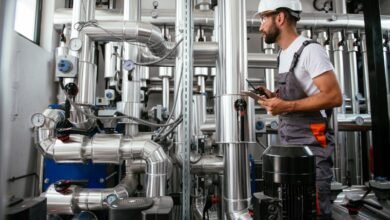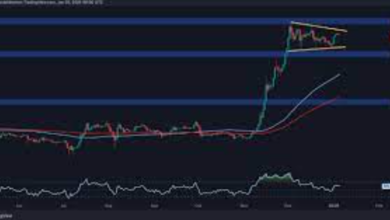Why GPR Surveying Is Essential for Construction Projects in London

London is a city like no other—rich in history, densely populated, and layered with centuries of infrastructure development. Beneath its roads, buildings, and parks lies a complex network of underground utilities, tunnels, old foundations, and archaeological remnants. For construction professionals, this presents a unique challenge: how do you break ground without disrupting what lies beneath?
The answer lies in GPR Surveys Surveying London Ground Penetrating Radar—a non-invasive, highly effective method for subsurface scanning. In a city as intricate as London, GPR surveying isn’t just helpful—it’s essential.
Whether you’re building a new residential block, expanding transport infrastructure, or retrofitting historic property, understanding the ground below is crucial for project success. This article explores why GPR surveying is vital for London’s construction projects, how it works, and the key advantages it offers to contractors, developers, and engineers.
What Is GPR Surveying?
Ground Penetrating Radar (GPR) is a geophysical technique used to detect and map underground features. It works by transmitting high-frequency radio waves into the ground. When these waves encounter a buried object or change in material, they reflect back to a receiver. By analyzing these reflections, surveyors can create detailed maps of what lies beneath the surface.
GPR is capable of identifying:
- Metallic and non-metallic utilities (e.g., water pipes, gas lines, telecom cables)
- Voids and sinkholes
- Old foundations, tanks, or buried debris
- Reinforced concrete structures
- Archaeological artifacts or historical remnants
The Challenges of Construction in London
1. Underground Congestion
London’s subsurface is one of the most congested in the world. Decades (even centuries) of development have filled the ground with overlapping networks of:
- Electrical and telecom cables
- Water mains and sewer systems
- Gas and heating pipelines
- Subway and utility tunnels
- Abandoned structures and basements
This congestion increases the likelihood of damaging critical infrastructure during excavation.
2. Inadequate Utility Records
Although utility maps exist, they’re often outdated or incomplete—especially in older parts of the city. Blind reliance on these records can result in costly and dangerous errors.
3. Regulatory and Heritage Constraints
In many areas of London, especially near historical buildings or protected zones, excavation is restricted or monitored. Traditional trenching methods can damage heritage assets or lead to project delays due to archaeological finds.
GPR surveying provides a non-invasive, accurate solution to navigate these challenges and keep projects on schedule and within budget.
Why GPR Surveying Is Essential in London
✔ Ensures Safety on Site
Accidental utility strikes are among the most serious hazards in construction. Damaging a gas line, electric cable, or water main can cause:
- Serious injury or death
- Fires or explosions
- Service outages
- Emergency repairs and shutdowns
GPR surveying identifies the exact location and depth of utilities so that crews can dig safely and confidently, reducing the risk of accidents.
✔ Supports Accurate Planning and Design
GPR data is crucial during the early stages of design and planning. By knowing where underground services and obstructions are, engineers and architects can:
- Avoid redesigns
- Plan alternative utility routes
- Optimize foundation placement
- Minimize rework
This means fewer surprises on-site, better design outcomes, and reduced overall project costs.
✔ Complies with Industry Standards (PAS 128)
In the UK, utility surveys are governed by PAS 128, a standard that sets out methods, accuracy levels, and reporting formats for underground detection. GPR surveying is a key method recognized by PAS 128.
Using certified GPR surveyors helps ensure regulatory compliance, especially when applying for planning permission or working on public infrastructure.
✔ Minimizes Environmental and Heritage Impact
Excavation in London’s sensitive areas—such as Westminster, Southwark, or Shoreditch—can trigger environmental or archaeological concerns. GPR offers a non-destructive way to examine subsurface conditions without damaging soil layers, heritage elements, or mature landscaping.
This is particularly useful when working near listed buildings or conservation areas where digging may be restricted or monitored.
✔ Saves Time and Reduces Delays
Time is money in construction. Delays caused by utility strikes, unexpected voids, or uncharted obstacles can derail timelines and stretch budgets. A GPR survey conducted early in the project helps:
- Prevent unexpected downtime
- Improve coordination across teams
- Support smoother construction workflows
In short, GPR helps keep your project moving forward—safely and efficiently.
✔ Identifies Voids and Subsurface Risks
Beyond detecting utilities, GPR can identify voids, sinkholes, and buried tanks—all of which can pose serious threats to foundations and structural integrity. Early identification allows for remediation before construction begins.
How GPR Surveying Works on a Construction Site
- Site Evaluation: Surveyors assess the site and define the scanning area.
- Data Collection: A GPR unit (often a cart or handheld device) is moved across the surface, transmitting radar pulses.
- Signal Analysis: Reflected signals are recorded and analyzed to identify buried objects or layers.
- Reporting: Detailed 2D or 3D maps, CAD files, and interpretive reports are provided for use by designers and contractors.
In many cases, GPR is used alongside other detection tools like electromagnetic locators (EML) to enhance accuracy and data confidence.
When Should You Use GPR in London?
You should consider GPR surveying for:
- New builds or extensions in urban areas
- Roadworks, tunnels, and rail upgrades
- Redevelopment of brownfield or derelict sites
- Installing or upgrading utilities
- Historical site renovations
- Environmental or geotechnical investigations
Basically, if you’re disturbing the ground in London, GPR should be part of your pre-construction checklist.
Choosing a GPR Surveying Provider in London
Look for a provider that offers:
- PAS 128-compliant surveys
- Experienced technicians familiar with London’s infrastructure
- Modern GPR equipment with multi-frequency capability
- CAD/BIM/GIS-ready reporting
- Rapid response for urgent projects
Ask for references or case studies from similar projects in London to ensure you’re working with a reliable expert.
Conclusion
London’s unique blend of historic charm and modern infrastructure makes construction both exciting and challenging. Beneath the surface lies a world of complexity that must be understood before any digging begins. GPR Surveys Surveying London is the key to unlocking that knowledge—safely, accurately, and efficiently.
From protecting lives and avoiding costly delays to enabling smarter design and preserving London’s rich history, GPR surveys are not just a luxury—they’re a necessity for construction in the capital.





